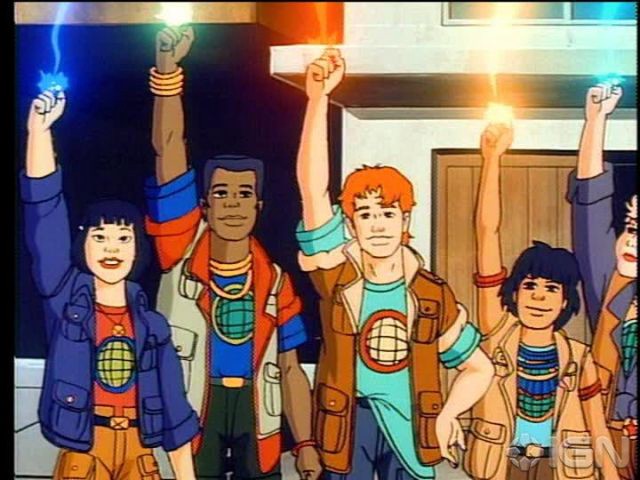Books & Culture
Apocalypse Could Be Soon but Don’t Give Up Hope
Jenni Fagan’s new novel explores the persistence of human warmth in the coldest and darkest of times

The year is 2020, the not too distant future — one in which we can unfortunately completely believe. At the opening of The Sunlight Pilgrims the polar ice caps are melting and the banks are wrecking the economies of Europe. The deaths of both his mother Vivienne and grandmother Gunn within six months of one another have left Dylan MacRae facing the imminent repossession of his home, a tiny art-house cinema in central London called Babylon. His mother has left him one thing apart from unpaid bills:
“… when he got back from the crematorium he found an envelope containing the deeds for a caravan 578.3 miles away, with a pink Post-it note and her scrawl: Bought for cash — no record in any of our accounts. Mum x”
Dylan heads north, taking his mum and his grandma’s ashes back to Scotland, their homeland. His new home is one of a row of silver, bullet-shaped dwellings in a caravan park in a place called Clachan Fells, surrounded by vast mountains and star-filled skies. He falls asleep watching scenes of environmental protesters on the TV and wakes at 5am to the noise of one of his neighbors hoovering the lane, and the sight of her reaching up to polish the moon. A man accustomed to an unconventional lifestyle is not perturbed by such apparently strange behavior.
Thus begins the relationship between Dylan and the moon-polisher, Constance, and her twelve-year-old child Stella. In Dylan and Stella’s first conversation she tells him that her mother isn’t normal and he says that his wasn’t either. What, one may ask, is normal anyway? This story does not attempt to answer the question; rather it shows how, with an open heart, people can accept one another for who they are. And it isn’t simple.
Stella has, as an old woman who appears one day in their lane says, “two spirits”. She was born a boy, Cael, but thirteen months before “the girl that wore his body got up and told everyone to quit calling her by the wrong pronoun.” She wants to fit in and it isn’t easy. Boys she grew up with have physically attacked her. Her father, a taxidermist called Alistair who has an on-off relationship with her mother, sends her boy’s clothes and refuses to call her Stella. She wants a second kiss from a boy called Lewis. Or does she? Dylan understands about being born in the wrong body, because he comes from a race of giants. Or does he?
“Myths are stories that help us make sense of the world(s) in which we live.”
There isn’t a strict division between myth and truth. Myths are stories that help us make sense of the world(s) in which we live. Dylan’s mother liked to say he was “a child created by a fallen angel and a mortal woman”, but the fallen angel was a man from Hebden Bridge with whom she had a one-night stand. In The Sunlight Pilgrims Jenni Fagan paints a vivid picture of how people find diverse ways of getting through difficult circumstances: Constance is a survivalist, who lives off her wits and collects old furniture from rubbish tips to turn into “shabby-shit”; Stella uses the internet to connect with other trans-teens and see girls like her who have a penis; Dylan finds that the skills of distilling gin which he learned from his mother stand him in good stead as a money-earner as the cold intensifies over the winter. Lacing the story with gentle (and occasionally black) humor, Jenni Fagan creates remarkable, rounded and wholly believable characters. They all have a bit of craziness about them and are all the more normal and wonderful for that.
In her debut novel, The Panopticon, Jenni Fagan created the wonderfully feisty teenager Anais Hendricks, battling with a system which cannot cope with her wildness. Stella Fairbairn is made in the same mold of determined individuality, battling with doctors reluctant to prescribe her hormone-blockers. She and Dylan have more in common than is at first apparent, including knowledge of the sunlight pilgrims, monks from the islands further north who drink energy from the sun. Stella learns about them from the old woman who tells her she has two spirits.
“You can drink light right down into your chromosomes, then in the darkest minutes of winter, when there is a total absence of it, you will glow and glow and glow.”
Dylan had heard the same from his grandma, and this shared knowledge of the myth/truth draws him and Stella closer to one another. Dylan and Constance become close too, in this darkening, freezing winter, and not just for comfort, though that is an element of it. When they lie together in the glow of a three-bar electric fire as the snow continues to fall outside, Dylan feels that “there is an ordinariness to their strange.” Later, when they’re sitting out on the caravan roof watching the aurora swirl purple and green in the sky, he reflects on his life:
“… and this — the best seat in the house to watch the universe unfold, with a woman he loves, and a kid he loves too and a neighbour who is affable and a tin box for home — is as good as it gets.”
The scenery of the land and sky in Clachan Fells are major characters in this story. There are magical phenomena associated with the cold — parhelia or ‘sun dogs’, where there appear to be three suns in the sky; and penitentes, rows of snow figures high on the mountains which seem to be marching towards the sun. And up above when daylight recedes, early in these northern climes, is the so-bright canopy of the stars and planets. There is also the transformatory nature of the snow which blankets the land, and the light upon it which at moments turns everything gold. Both Stella and Dylan go alone up the mountains to address their fears and grief respectively in the vastness of nature. And at the end they and Constance, stir-crazy from being inside for weeks, go out together and scatter Gunn’s ashes towards the penitentes, enabling Dylan to feel, at last, lighter.
“The Sunlight Pilgrims is a story about light and darkness, the essential co-existence of the two.”
Fear and majesty sit side by side in this freezing winter. Out to sea an iceberg has drifted much too far south, putting Clachan Fells onto the international news alongside all the other dramas of this time. Up in the mountains magnificent stags and birds of prey survive against the odds. The Sunlight Pilgrims is a story, not a polemic, but is more than just an entertainment. As they look out from the harbor on the creaking majesty of the ice creations, Constance says to Dylan in a moment of candor:
“Sometimes you get a minute where it all seems worth it: all the stress, the struggling, life, death, all the shit in between. You see something like this and it all becomes sharper — oh yeah, you remember, this is it, this is it!”

The Sunlight Pilgrims is a story about light and darkness, the essential co-existence of the two, the life-force which drives us on into the light and its transforming power even when everything appears to be stacked against us. It is also about the spectrum of light, the different colors which it produces and the wide range of ways in which we can live. It is a beautiful story which itself illuminates, and perhaps above all it illuminates the importance of respecting difference.









